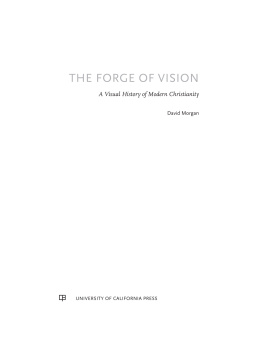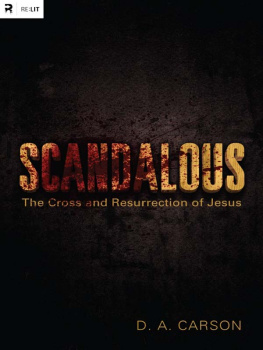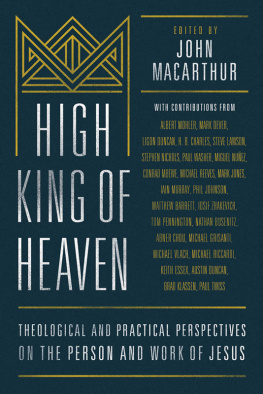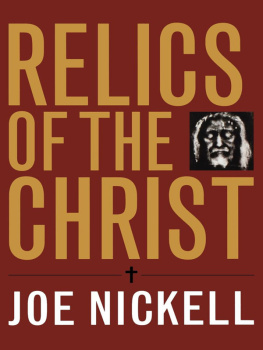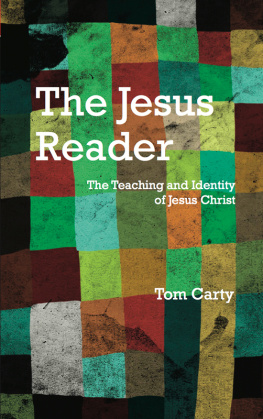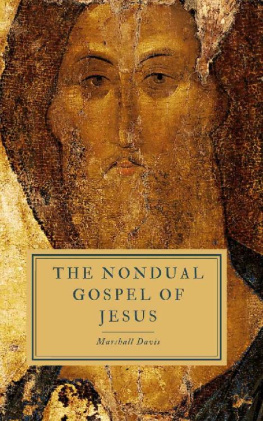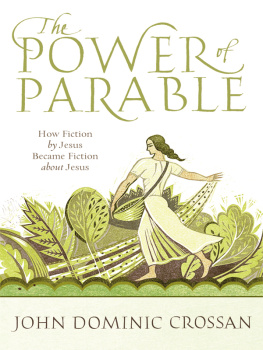PENGUIN BOOKS
THE AUTHENTIC GOSPEL OF JESUS
Geza Vermes was born in Hungary in 1924. He studied in Budapest and Louvain, where he read Oriental history and languages and in 1953 obtained a doctorate in theology with a dissertation on the Dead Sea Scrolls. From 1957 to 1991 he taught at the Universities of Newcastle and Oxford. His pioneering work on the Dead Sea Scrolls and the historical figure of Jesus led to his appointment as the first Professor of Jewish Studies at Oxford, where he is now Professor Emeritus. Since 1991 he has been director of the Forum for Qumran Research at the Oxford Centre for Hebrew and Jewish Studies. Professor Vermes is a Fellow of the British Academy and of the European Academy of Arts, Sciences and Humanities, the holder of an Oxford D.Litt. and of honorary doctorates from several British universities. Professor Vermess books include The Complete Dead Sea Scrolls in English (1997) and The Changing Faces of Jesus (2000), both published by Penguin.
GEZA VERMES
The Authentic Gospel of Jesus

PENGUIN BOOKS
For Margaret and Ian with love
PENGUIN BOOKS
Published by the Penguin Group
Penguin Books Ltd, 80 Strand, London WC2R 0RL , England
Penguin Group (USA) Inc., 375 Hudson Street, New York, New York 10014, USA
Penguin Books Australia Ltd, 250 Camberwell Road, Camberwell, Victoria 3124, Australia
Penguin Books Canada Ltd, 10 Alcorn Avenue, Toronto, Ontario, Canada M4V 3B2
Penguin Books India (P) Ltd, 11 Community Centre, Panchsheel Park, New Delhi 110 017, India
Penguin Group (NZ), Cnr Airborne and Rosedale Roads, Albany, Auckland 1310, New Zealand
Penguin Books (South Africa) (Pty) Ltd, 24 Sturdee Avenue, Rosebank 2196, South Africa
Penguin Books Ltd, Registered Offices: 80 Strand, London WC2R 0RL , England
www.penguin.com
Published by Allen Lane 2003
Published in Penguin Books 2004
7
Copyright Geza Vermes, 2003
All rights reserved
The moral right of the author has been asserted
Revised Standard Version of the Bible, copyright 1952 (2nd edition, 1971) by the Division of Christian Education of the National Council of the Churches of Christ in the United States of America.
Used by permission. All rights reserved.
Except in the United States of America, this book is sold subject to the condition that it shall not, by way of trade or otherwise, be lent, re-sold, hired out, or otherwise circulated without the publishers prior consent in any form of binding or cover other than that in which it is published and without a similar condition including this condition being imposed on the subsequent purchaser
ISBN-13: 978-0-14-100360-3
Contents
Prologue:
A fifth book on Jesus?
The historical Jesus, a religious genius who lived, taught and died in Jewish Palestine in the first century of the time reckoning named after him, has been at the centre of my scholarly preoccupation since the late 1960s. Acting as a sympathetic historian and discarding denominational biases, both the deification of Jesus by Christians and his traditional Jewish caricature as an apostate, a magician and an enemy of the people of Israel, I have simply tried to put the record straight and to reconstruct a genuine likeness of Yeshua, son of Joseph of the Galilean townlet of Nazareth.
The original project developed into a trilogy. In 1973 appeared Jesus the Jew, a work which purported to discover and sketch the true personality of Jesus within the setting of his authentic historical milieu. It was followed in 1983 by a first essay to piece together the original doctrinal, religious and ethical message of the Gospel in Jesus and the World of Judaism, a volume which also contained two methodological essays to justify my special way of proceeding. Yet another ten years had passed before I was ready to present in 1993 the final part of the trilogy under the self-explanatory title The Religion of Jesus the Jew. Being historically inspired, the series was based exclusively on the least theologically motivated sources of the life and teaching of Jesus, the Synoptic Gospels of Mark, Matthew and Luke. Then in the late 1990s I undertook a fresh re-examination of the material; it saw the light of day in the spring of 2000 under the title The Changing Faces of Jesus. Here I adopted a two-pronged approach, simultaneously historical and literary, to the various representations of Jesus, seeking to identify his diverse portrayals in the whole of the New Testament. I started with the latest and doctrinally most advanced Gospel of John, and progressed in a descending order of theological sophistication through the epistles of St Paul and the other letter-writers to the Acts of the Apostles, to the Synoptic Gospels and finally to the Jesus image concealed beneath Luke, Matthew and Mark. The structure of the book reminds one of an archaeological excavation performed on literary sources. The dig starts with the top layer, the most recent of them all, and descends as it were to the pre-Gospel Jesus who is identified with the help of a historico-literary analysis of the Synoptic material merged with the ideas and realities of the Jewish world in which Jesus lived.
After four books on Jesus why did I decide to write a fifth one? The idea arose from a prompting by Stefan McGrath, my friendly editor at Penguin, who suggested shortly after the publication of The Changing Faces of Jesus that I should devise a companion volume to it. Reflecting on the matter, it struck me that I had never tried my hand at a critical interpretation of the Gospel text itself. Perhaps this is how I should have started the Jesus project years ago, I said to myself, but maybe it is better late than never. Thus was conceived The Authentic Gospel of Jesus, known for a while at Penguin Books as Untitled on Christ. This new book was to collect, thematically classify, and succinctly comment on every word attributed to Jesus in the Gospels of Matthew, Mark and Luke. Thus the reader would be enabled to discover between the covers of a single book all the material which is usually treated in three separate volumes of Gospel commentary.
In the present venture my first goal is to expound all the sayings which Jesus supposedly uttered, but the ultimate purpose of the book is the rediscovery of the genuine religious message preached and practised by him. The doctrinal and moral statements are divided into nine chapters corresponding to nine literary categories: (1) narratives and commands; (2) controversy stories; (3) words of wisdom; (4) parables; (5) biblical quotations; (6) prayers; (7) son of Man sayings; (8) sayings about the Kingdom of God; and (9) eschatological rules of behaviour.
The succinct commentary attached to the quotations attempts to distinguish the diverse levels of superimposed meanings with a view to establishing, if possible, their primary setting and significance in the life of Jesus. In the tenth and final chapter I endeavour first to formulate, and then in the Appendix to apply, the principles which allow the determination of the parameters of authenticity, or in plain language to distinguish the genuine or probably genuine sayings of Jesus from those which are unlikely to be authentic. As a result an approximation of his real teaching emerges, distinguished from the successive revised and enlarged editions produced by the evangelists, the early church and two millennia of Christianity.
Finally, on the basis of the maxims judged most likely to be genuine, I will attempt to outline the personality of the real Jesus and the quintessence of his authentic eschatological gospel. A parting forward glance will seek to assess the relationship between the historical Jesus and Christianity from the point of view of a detached twenty-first-century observer confidently assuming that such an uncommon animal as a
Next page

